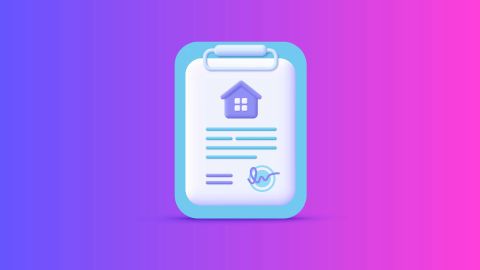Pradhan Mantri Awas Yojana Eligibility
Applicants will be eligible for PMAY when all below conditions are met:
- The beneficiary family should not own a pucca house (an all-weather dwelling unit) either in his/ her name or in the name of any member of his/ her family in any part of India.
- The beneficiary family should not have availed of central assistance under any housing scheme from the Government of India/ State government.
- The beneficiary family should not have availed any PMAY – CLSS subsidy from any of the Primary Lending Institutions (‘PLI’).
PMAY eligibility criteria based on income
Economic Section |
Annual Family Income |
Maximum carpet area |
EWS |
Up to Rs. 3 Lakh |
30 square meters |
LIG |
Rs. 3 Lakh to Rs. 6 Lakh |
60 square meters |
MIG I |
Rs. 6 Lakh to Rs. 12 Lakh |
160 square meters |
MIG II |
Rs. 12 Lakh to Rs. 18 Lakh |
200 square meters |
PMAY Eligibility for EWS and LIG
The Pradhan Mantri Awas Yojana (PMAY) is a government scheme in India aimed at providing affordable housing to Economically Weaker Sections (EWS) and lower-income groups (LIG). To be eligible for the PMAY scheme under these categories, the following criteria generally apply:
Economically Weaker Sections (EWS):
- Income criteria: The annual household income of applicants in the EWS category should typically be up to Rs. 3 lakh (subject to variations based on location and updates).
- Property ownership: The applicant or any family member should not own a pucca house (a permanent, concrete structure) anywhere in India.
- Documentation: Applicants are required to provide proof of income, identity, and residence.
Lower-Income Groups (LIG):
- Income criteria: The annual household income of applicants in the LIG category is typically between Rs. 3 lakh to Rs. 6 lakh (subject to variations based on location and updates).
- Property ownership: Similar to EWS, the applicant or any family member should not own a pucca house anywhere in India.
- Documentation: Applicants need to provide proof of income, identity, and residence documents.
It is important to note that the PMAY scheme has both urban and rural components, each with specific guidelines and criteria. Eligibility criteria can also change over time due to government updates and location-specific factors.
PMAY for MIG -I and MIG-II
The Pradhan Mantri Awas Yojana (PMAY) also caters to Middle-Income Groups (MIG), which includes two sub-categories: MIG-I and MIG-II. Here are the eligibility criteria and benefits for each sub-category:
For Middle-Income Group - I (MIG-I):
- Income criteria: The annual household income for applicants in MIG-I should fall between Rs. 6 lakh to Rs. 12 lakh (subject to variations based on location and updates).
- Property ownership: The applicant or any family member should not own a pucca house (a permanent, concrete structure) anywhere in India.
- Loan amount: Under PMAY MIG-I, eligible beneficiaries can avail a maximum loan subsidy of 4% on a loan amount of up to Rs. 9 lakh.
- Loan tenure: The maximum tenure for this loan is 20 years.
For Middle-Income Group - II (MIG-II):
- Income criteria: The annual household income for applicants in MIG-II should fall between Rs. 12 lakh to Rs. 18 lakh (subject to variations based on location and updates).
- Property ownership: The applicant or any family member should not own a pucca house anywhere in India.
- Loan amount: Under PMAY MIG-II, eligible beneficiaries can avail a maximum loan subsidy of 3% on a loan amount of up to Rs. 12 lakh.
- Loan tenure: The maximum tenure for this loan is 20 years.
Both MIG-I and MIG-II categories are eligible for the Credit Linked Subsidy Scheme (CLSS), which provides financial assistance to help reduce the cost of home loans. The interest subsidy is credited to the loan account, resulting in lower monthly EMIs for the beneficiaries.
As with any government scheme, it is important to verify the latest guidelines, income limits, and benefits with the relevant government authorities or housing agencies, as they can be subject to updates and variations based on factors such as location and changes in government policy. Meeting the eligibility criteria is the first step, and applicants must also follow the application process, typically involving submission of an application form and supporting documents to designated authorities or financial institutions participating in the PMAY scheme.
Other requirements to avail PMAY
In addition to these criteria, these are the other requirements to note:
- Only statutory towns, as per Census 2011, and towns notified subsequently are eligible for coverage under the scheme.
- The construction/ extension for which the loan is availed must be completed within 36 months from the date of disbursement of the 1st instalment of the loan amount.
- For LIG/ EWS category: The houses constructed/ acquired with central assistance under the mission should be in the name of the female head of the household or in the joint name of the male head of the household and his wife. Only in cases when there is no adult female member in the family, the house can be in the name of male member of the household.
Disclaimer:
The validity of the PMAY scheme has not been extended.
- The EWS/ LIG schemes have been discontinued w.e.f. March 31, 2022
- The MIG schemes (MIG I and MIG II) have been discontinued w.e.f. March 31, 2021
Frequently asked questions
The PMAY scheme is open to families with an annual income of up to Rs. 18 lakh, provided they do not own a permanent house anywhere in India.
Yes, government employees are generally eligible for the Pradhan Mantri Awas Yojana (PMAY) if they meet the income and property ownership criteria.
Yes, you can avail of Pradhan Mantri Awas Yojana (PMAY) benefits when applying for a joint home loan, provided that all applicants meet the eligibility criteria individually.








